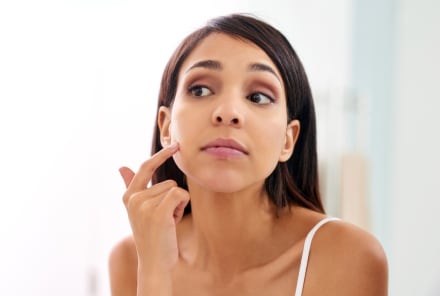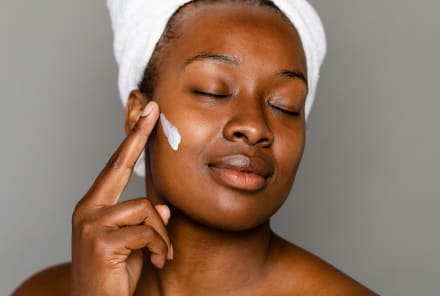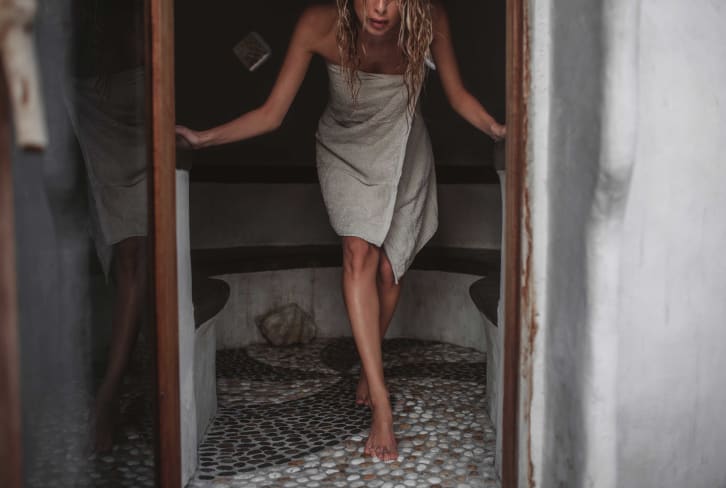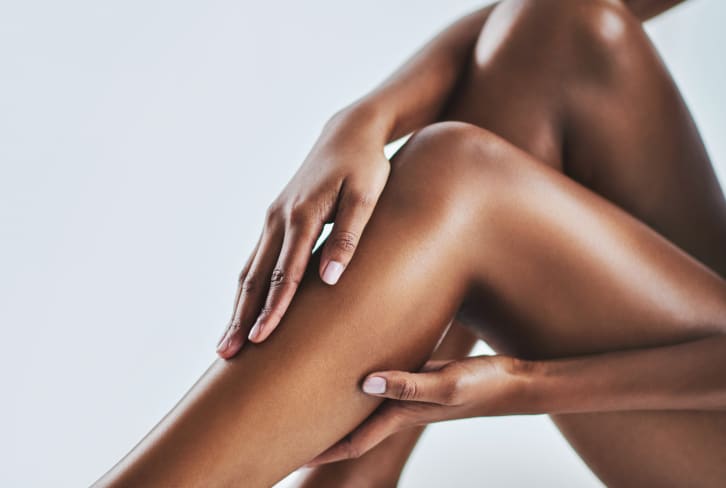Advertisement
Skin Undertones: Why They're Important + A Helpful Quiz To Identify Yours

Shopping for foundation is no easy feat. There's a lot to keep in mind: the texture (cream, liquid, powder), the ingredients (vegan, clean, cruelty-free), the finish (matte, dewy, luminous). Let's add another layer, shall we? The undertones. You may have heard the term in passing, perhaps thrown around by makeup artists as they pat in complexion products. But familiarizing yourself with undertones isn't just a nice-to-know; it can actually make or break your makeup look.
If you're already adept in all things undertones, feel free to skip to the quiz below. But if you're new to the venture, we break down everything you need to know about undertones, as well as how to identify your own.
What are undertones, and why are they important?
"Undertones are the key to unlocking the science of makeup," states makeup artist Jaleesa Jaikaran. They refer to the underlying shades peeking through your complexion rather than the actual color of your skin (hence the term undertones). For example, some may have notes of pink or blue underneath the skin, while others take on a more golden-yellow quality. That said, two people can have the exact same skin tone with completely different undertones—and thus require a distinct set of makeup products.
The plot thickens: Not only do different people have different undertones, but you may also have a variety of undertones across your own face. For instance, you may appear warmer on the forehead with cool, purplish hues around the eyes. Simply coating your face with one shade can make the finish a bit flat and caky. As makeup artist Fatimot Isadare explains, "Naturally, we have more than one color on our face. So when you're going in with your complexion products, you also want to use more than one color. That's what helps you bring back depth and definition." It's the difference between makeup that looks one-dimensional and makeup that looks professionally mastered—targeting all your undertones is key for elevating the look, be it a natural finish or a full face.
And it's not just complexion products that get all the attention; all makeup—from highlighter to shadow—can either complement or clash against your skin. "On the wrong undertones, certain shades and colors can make you look rather dull and lackluster," informs Jaikaran. Take lipstick, for example: If you're generally warm-toned, a blue-based red lip might look a bit, well, off. It's not that you're not a red lip kind of gal; simply reach for an orangey-red instead—the hue will complement your skin's undertones and look striking, in the best way.
The bottom line? Knowing your undertones is crucial for shade-matching your makeup and shopping for products that truly suit every part of your skin.
What are the types of undertones?
While there are multiple colors that fall into each category, the core four are as follows:
- Warm: Warm undertones have a base of yellow, gold, or peach. People with warm undertones also have the potential to look a bit sallow with a yellowish cast (which is why discovering the right products is important). Foundations with yellow undertones will look seamless against the skin, although people with warm undertones around the eyes may want to look for slightly peach concealers to offset the sallowness. For warm-toned individuals, your color palette may include gold, bronze, brown, coral, and peach.
- Cool: Cooler undertones contain pink, blue, or red hues. If you fall on the cooler side, you may gravitate toward those aforementioned blue-based reds, and you'll want a foundation that matches those tones without appearing too pink. Your color palette may also include blue, pink, frosted purples, and blue-greens.
- Neutral: Those with neutral undertones have both yellow and pink hues—there isn't an obvious sway one way or the other. If you do have neutral undertones, you can pull off a number of color palettes and tones (lucky you!).
- Olive: "You don't see as many people with olive," says Isadare, but it does deserve its own category. Many may confuse it for neutral, but those with olive undertones often have a green or gray, sometimes ashen hue to the skin. These individuals can fare well with complexion products that have a slightly golden undertone, and a perfect color palette would include bronze, gold, yellow, brown, coral, cranberry, peach, and green.
How to identify your undertones: a quiz.
Of course, knowing exactly which undertones you have isn't so cut-and-dried. And sometimes looks can be deceiving: "Some people are naturally more red in the face, but that doesn't necessarily mean you have cool undertones," says Isadare (especially if your skin experiences redness from eczema or rosacea—that flush doesn't always mean you have pink hues underneath).
That said, it takes more than a simple once-over with an untrained eye. Here's a quick quiz that can help you narrow down the results:
The takeaway.
Ultimately, identifying your undertones is a game of trial and error. It isn't a perfect science, and it usually takes some product testing to know for sure.
At the same time, there are no hard-and-fast rules with makeup. Feel like a frosted blue shadow, even though your skin technically falls on the warmer side? Go for it. Have cooler undertones but love a sweep of golden highlighter? Glow on. As Isadare remarks, "You can wear what you want at the end of the day." Your undertones are just there to tell you what looks most natural.
Watch Next
Enjoy some of our favorite clips from classes
Enjoy some of our favorite clips from classes
What Is Meditation?
Mindfulness/Spirituality | Light Watkins
Box Breathing
Mindfulness/Spirituality | Gwen Dittmar
What Breathwork Can Address
Mindfulness/Spirituality | Gwen Dittmar
The 8 Limbs of Yoga - What is Asana?
Yoga | Caley Alyssa
Two Standing Postures to Open Up Tight Hips
Yoga | Caley Alyssa
How Plants Can Optimize Athletic Performance
Nutrition | Rich Roll
What to Eat Before a Workout
Nutrition | Rich Roll
How Ayurveda Helps Us Navigate Modern Life
Nutrition | Sahara Rose
Messages About Love & Relationships
Love & Relationships | Esther Perel
Love Languages
Love & Relationships | Esther Perel


















